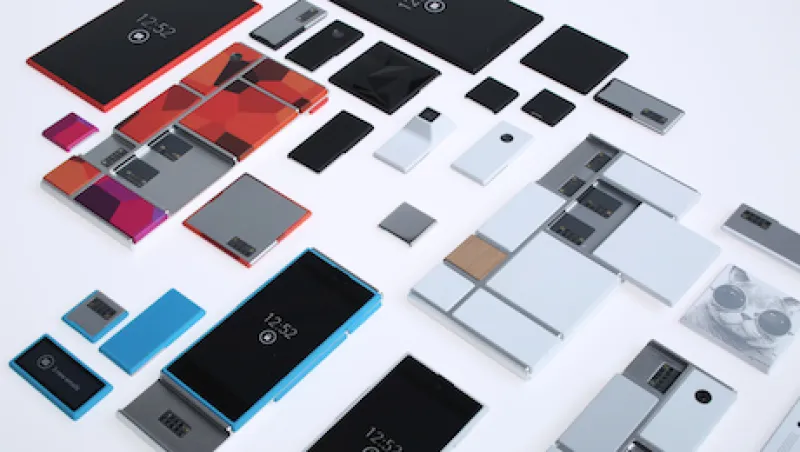What’s the appeal behind perhaps the most popular children’s toy of all time? Almost any child in any country could tell you the answer: With Legos, you can make whatever you want. Structure meets self-expression. That the Lego Group is now valued at $14.6 billion seems adequate proof of that particular concept.
These days it’s starting to seem like tech is taking a tip from Toyland. Late last month Google announced that it was rolling out perhaps the highest-tech bunch of plastic blocks ever: the “Gray Phone,” a smartphone whose component parts can be snapped into custom configurations in its rectangular exoskeleton. Camera, battery, antenna — all kinds of processing units can be taken in and out, allowing users to shape their perfect handset. More customizable — at least in terms of hardware —than any other cell phone in history, the device is already being marketed as a means of self-expression, of engaging and challenging consumers’ creativity as they build.
The Gray Phone was first displayed in mid-April of this year, at the first developer conference for Project Ara, the best fruit of Google’s temporary acquisition of Motorola Mobility. (Google made the acquisition for patents it retained when Motorola was subsequently sold to Lenovo.) A flurry of coverage followed, and a slew of predictions. From its $50 price tag to its unheard-of customizability, Project Ara’s Gray Phone — and its subsequent iterations — may revolutionize mobile.
In its Lego-ness, the Gray Phone attempts to reverse decades of sleek, closed consumer electronics as produced by Apple. Personal computers and video game consoles once came with interchangeable, customizable parts to suit the experimentalist tastes of the enthusiasts who bought them, but the first PCs for use in the home were sold because they could be used right out of the box — no tinkering and no expertise required. The monitor and the keyboard and the processor and the drive were all built into the same plastic casing, with minimal moving parts. Fast-forward to the iPod — minimal interface, minimal complications, practically no buttons.
In a certain sense, Project Ara and Google seem to be wagering that the minimalist trend is reversible. An iPhone’s elegance, its appeal, lies in its simplicity, its integrity — all screen, it is a single, unimpeachable slab of technology. Project Ara is hoping that taking that slab apart, making it one’s own, will excite consumers. The face of the phone will be a touchscreen, yes, but its back panel will be sectioned off for modular components. (That the Gray Phone’s snap-on touchscreen will be easily replaceable also seems like a massive win for consumers frustrated with paying several hundred dollars for repairs.)
The phone may also change the way consumers interact with cell phone service providers and retailers: New modules could be 3-D-printed in a store or even at home, reducing price and perhaps radically shrinking the number of brick and mortar stores. In addition to a marked change in the urban retail landscape — since cell phone and cell phone accessory stores seem to have proliferated as rapidly as Starbucks — that means partnerships with companies working to produce conductive ink, so that circuit boards can printed rapidly. Billions of units could go into production immediately.
Designers are hoping that waste, too, might decrease if modular cell phones take over. A basic exoskeleton could last for years past the lifespan of our current cell phones and never become obsolete. Instead of tossing a smartphone after two years, consumers could buy a Gray Phone intended to last up to six. Want a better camera? Need a different antenna? Switch out that module only. Anything that isn’t a screen can be replaced by a home 3-D printer.
Project Ara is scheduled for its first rollout to consumers in late 2015 — not so very far away. And not so very far past that date — and if Project Ara succeeds in changing enough consumers’ minds about modularity — we can expect to see many more Ara-like devices in very little time. Not just wearable but wearable modular computing could mean that moving your camera from your phone to your wrist, or your phone from your wrist to your glasses, would be incredibly easy. Add a keyboard to a braceletlike exoskeleton if you’re headed to a lunch meeting and want to take notes without the bulk of a pad or tablet. Remove it when you’re back at your desk or with your laptop.
Modularity may be hard for iPhone devotees especially to swallow at the moment. Nonetheless, communities of developers have already sprung up around the Gray Phone and Project Ara. The battle between Google and Apple for the lion’s share of the smartphone market has implications for all of us — soon we may all be living life à la Lego.






